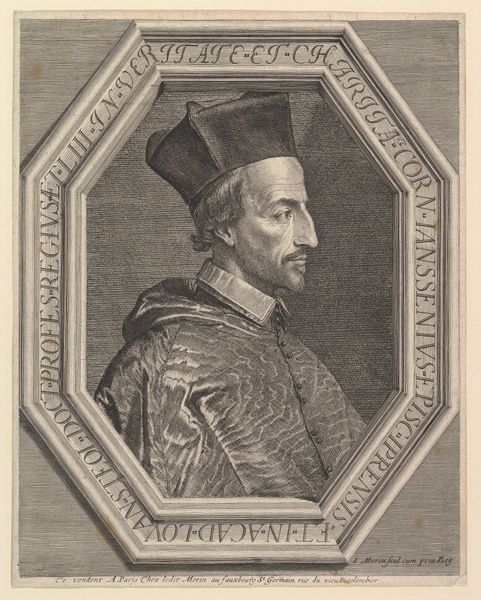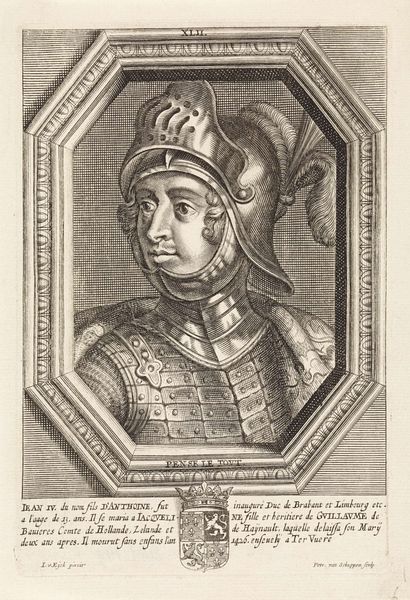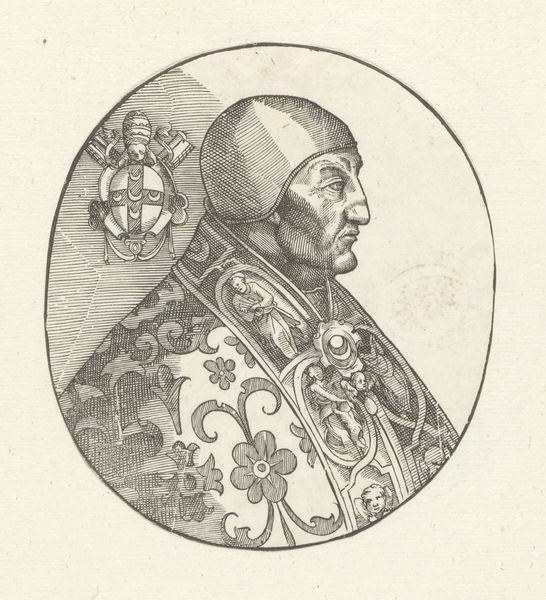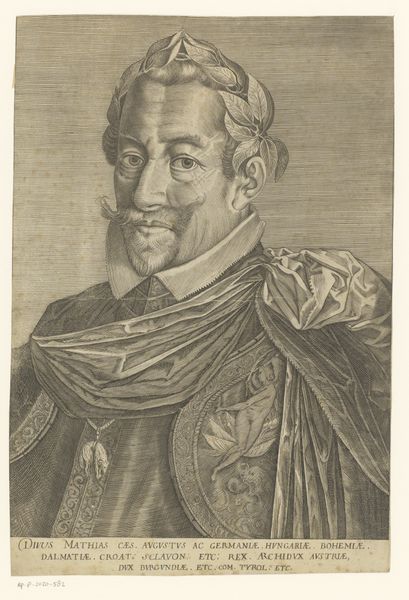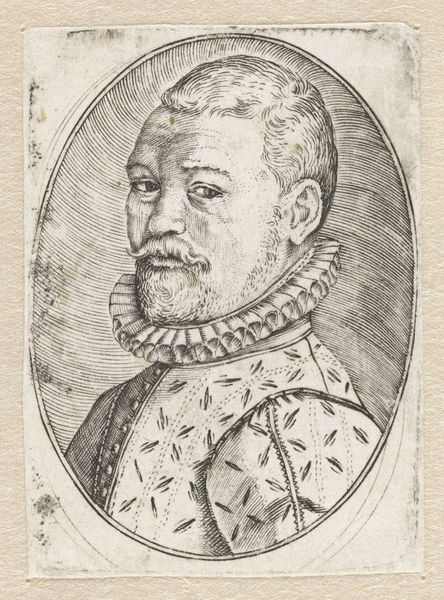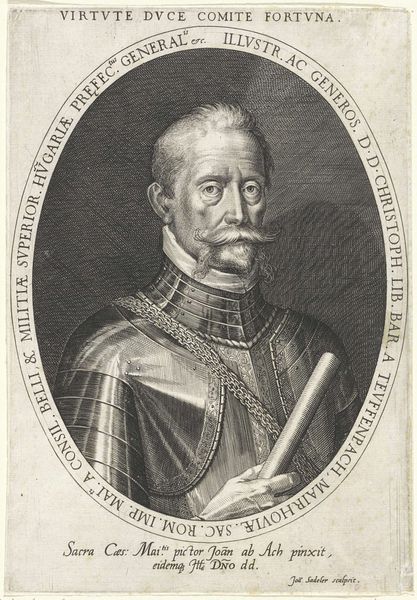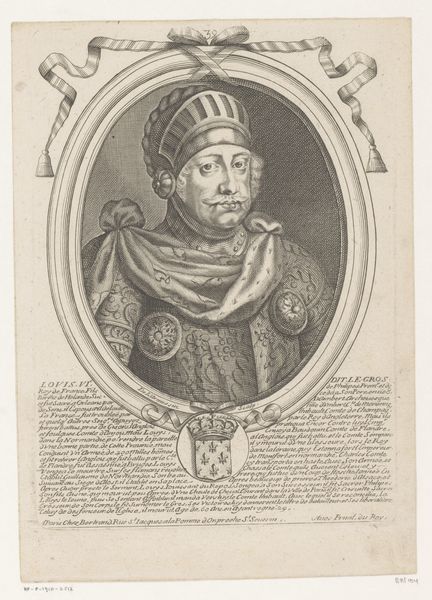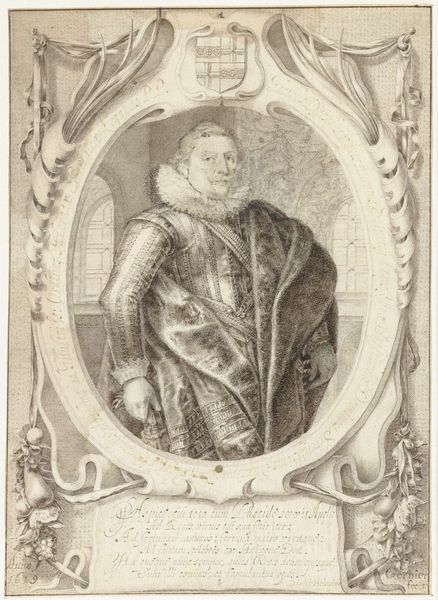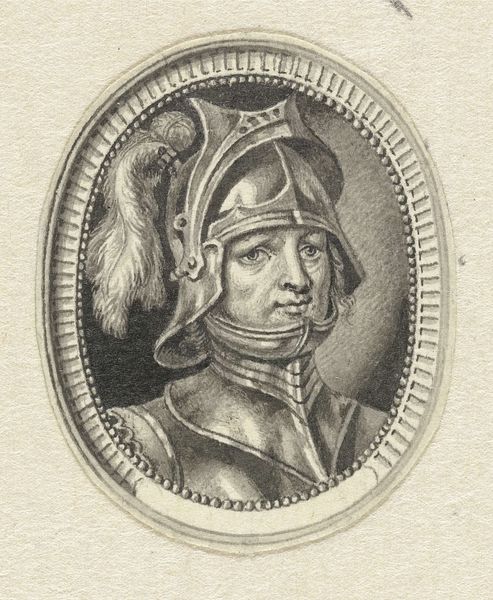
drawing, metal, intaglio, engraving
#
portrait
#
pencil drawn
#
drawing
#
toned paper
#
light pencil work
#
baroque
#
metal
#
intaglio
#
pencil sketch
#
old engraving style
#
personal sketchbook
#
portrait reference
#
pencil drawing
#
portrait drawing
#
pencil work
#
engraving
Dimensions: height 55 mm, width 43 mm
Copyright: Rijks Museum: Open Domain
Editor: So, here we have Pieter Serwouters' "Portret van een man met een hoge hoed met veren," made sometime between 1596 and 1657. It’s an engraving, a pretty small one at that, housed here at the Rijksmuseum. I'm struck by the detail in the ruff and feathered hat—it gives such a sense of the subject's status. How do you see this work within its historical context? Curator: This portrait, precisely because of that detailed rendering of status markers like the ruff and feathered hat, speaks volumes about the social hierarchies of the time. But it also invites us to consider who was excluded from such portrayals. Consider the labor, resources, and power dynamics embedded in those markers of wealth and status that Serwouters so meticulously captured. Editor: So you're saying that these details not only showcase status, but also the inequality of that era? Curator: Exactly. What’s fascinating about portraits from this period is how they visually codified social standing. Who had access to representation, and what message was being sent? It prompts questions about power, visibility, and the lives that remained unseen and unrepresented. How do you think the subject of this portrait would have wanted to be perceived? Editor: Probably as powerful and cultured. It's a pretty clear message! But it also makes you wonder about everyone else, especially those who could never dream of having their portrait made. Curator: Precisely. It's these contrasts that bring historical inequities into sharper focus. And thinking critically about that disparity allows us to question whose stories are told, and whose are erased in visual representations throughout history, and even today. Editor: I never considered it that way before, but it definitely adds another layer of interpretation to this seemingly straightforward portrait. Curator: These reflections are crucial to understanding the complex interplay of art and society. We need to think of representation as a technology that actively produced both privilege and marginalization.
Comments
No comments
Be the first to comment and join the conversation on the ultimate creative platform.
